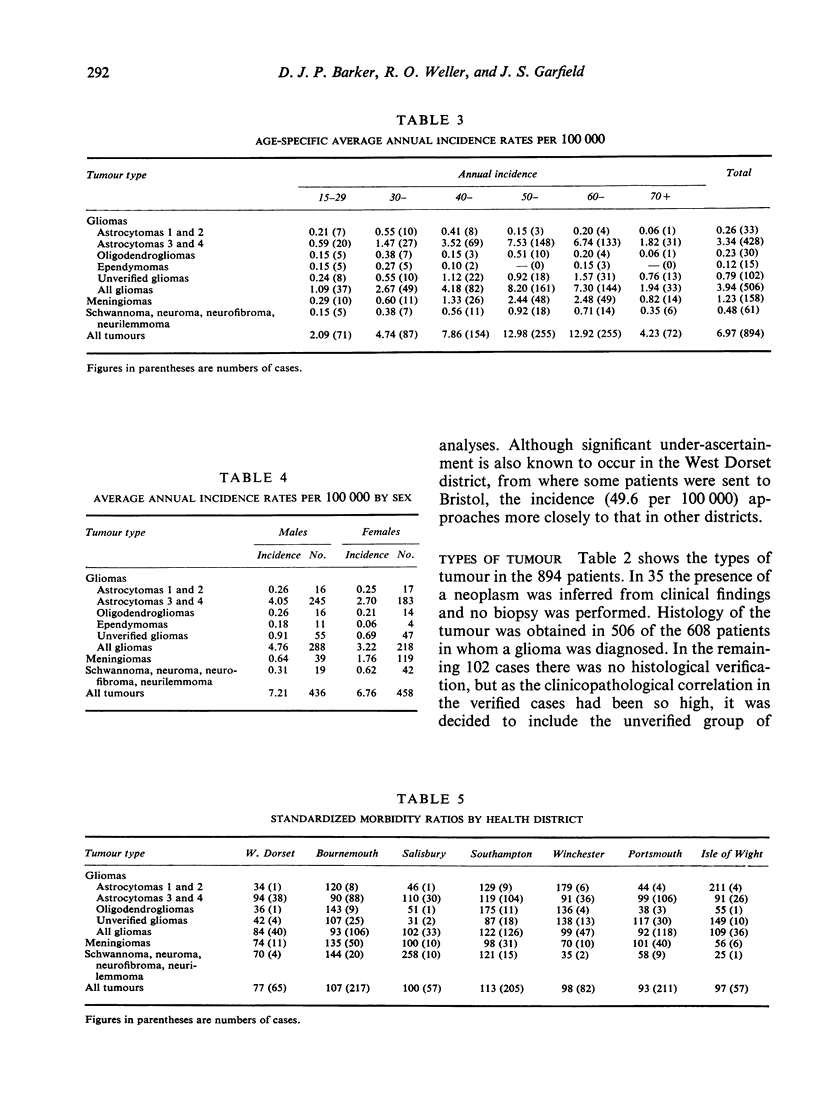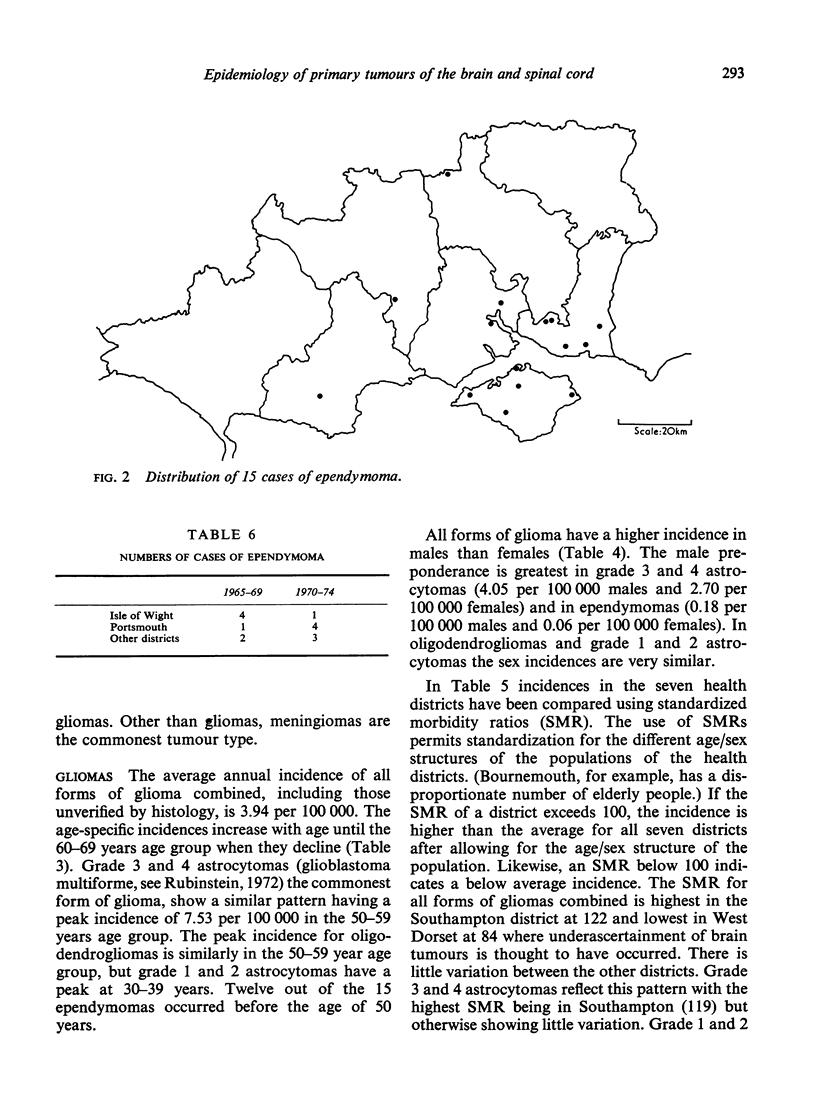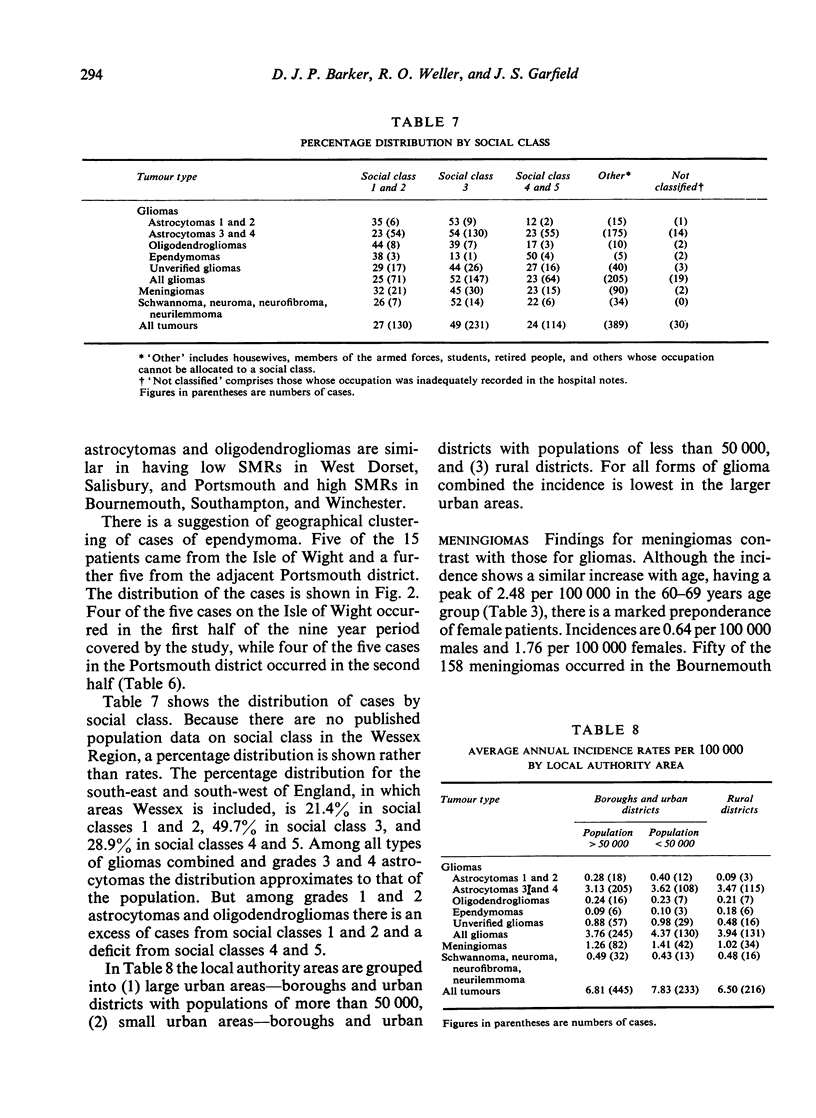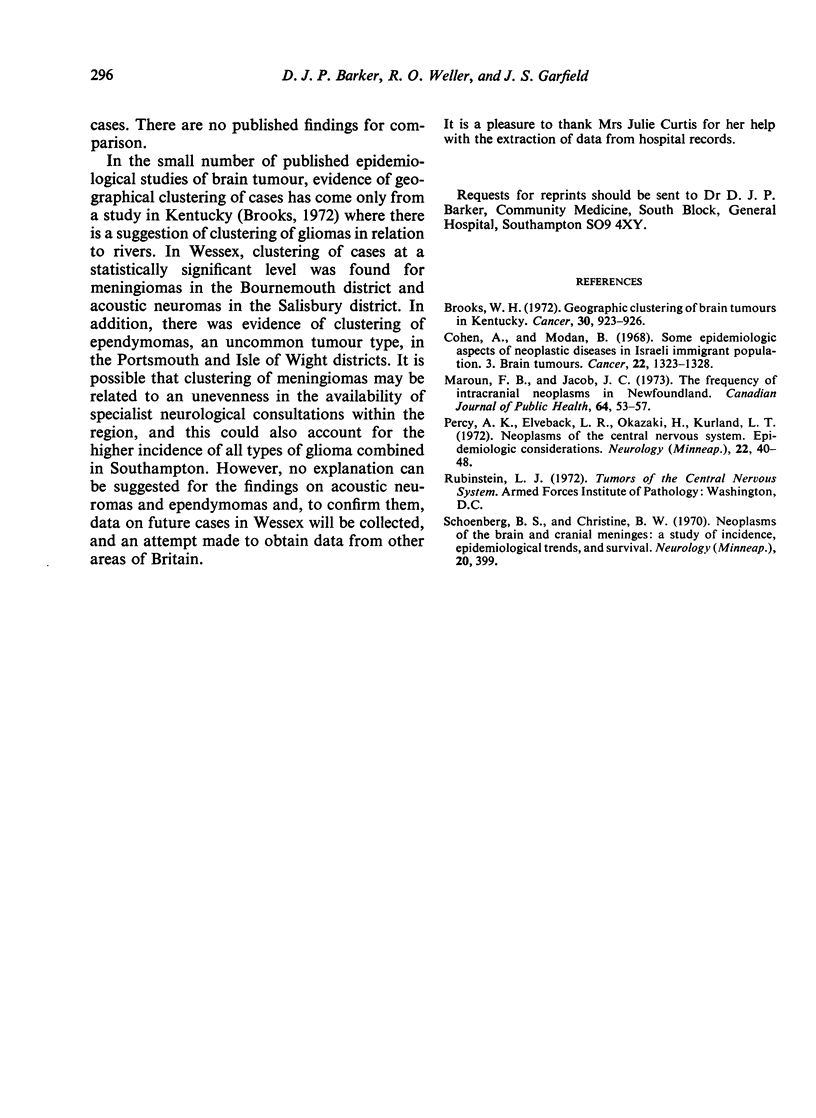Abstract
This survey is based upon 894 patients presenting with primary tumours of the brain, spinal cord, and meninges, over a nine year period in the Wessex population of about 1 1/2 million. All patients were 15 years of age or over. Each tumour type is characterized by age, sex, district, social class, and by rural or urban distribution. Standardized morbidity ratios for each tumour type are calculated for each health district. Gliomas are the commonest tumour with an average annual incidence of 3.94 per 100,000; they occur with a lower frequency in large urban areas. Grade 3-4 astrocytomas (glioblastoma multiforme) have a peak annual incidence of 7.53 per 100,000 in the 50-59 years age group and are more common in males. The peak incidence for oligodendrogliomas is also 50-59 years but for grade 1-2 astrocytomas it is 30-39 years. Meningiomas have an average annual incidence of 1.23 per 100,000 with a peak incidence of 2.48 per 100,000 at 60-69 years; they have a female predominance (female 1.76 per 100,000; male of 0.64 per 100,000). Rural districts have a lower incidence of meningiomas than urban areas. There is some variation in the distribution of gliomas, meningiomas, and Schwannomas throughout the Wessex region and there is a suggestion of geographical clustering of ependymomas, acoustic neuromas, and meningiomas. An excess of patients with grade 1-2 astrocytomas and oligodendrogliomas is seen in social classes 1 and 2 and a deficit in classes 4-5; a similar, but less marked, preponderance is seen with meningiomas.
Full text
PDF






Selected References
These references are in PubMed. This may not be the complete list of references from this article.
- Brooks W. H. Geographic clustering of brain tumors in Kentucky. Cancer. 1972 Oct;30(4):923–926. doi: 10.1002/1097-0142(197210)30:4<923::aid-cncr2820300410>3.0.co;2-#. [DOI] [PubMed] [Google Scholar]
- Cohen A., Modan B. Some epidemiologic aspects of neoplastic diseases in Israeli immigrant population. 3. Brain tumors. Cancer. 1968 Dec;22(6):1323–1328. doi: 10.1002/1097-0142(196811)22:6<1323::aid-cncr2820220632>3.0.co;2-h. [DOI] [PubMed] [Google Scholar]
- Maroun F. B., Jacob J. C. The frequency of intracranial neoplasms in Newfoundland. Can J Public Health. 1973 Jan-Feb;64(1):53–57. [PubMed] [Google Scholar]
- Percy A. K., Elveback L. R., Okazaki H., Kurland L. T. Neoplasms of the central nervous system. Epidemiologic considerations. Neurology. 1972 Jan;22(1):40–48. doi: 10.1212/wnl.22.1.40. [DOI] [PubMed] [Google Scholar]
- Schoenberg B. S., Christine B. W. Neoplasms of the brain and cranial meninges: a study of incidence, epidemiological trends, and survival. Neurology. 1970 Apr;20(4):399–399. [PubMed] [Google Scholar]


